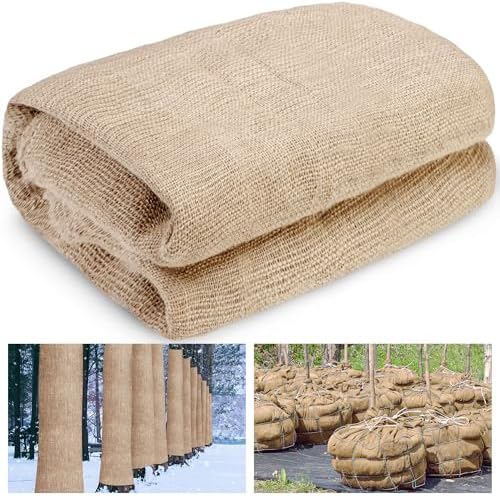- April 3, 2025
- Posted by: wellcoindustries
- Categories: Burlap, Erosion Control
Introduction
Winter can be incredibly harsh on your garden plants, with freezing temperatures, icy winds, and heavy snow posing serious threats. Many gardeners struggle with protecting their precious shrubs, bushes, and perennials from these harsh conditions. Thankfully, burlap plant covers for winter offer an effective, economical, and environmentally friendly solution. In this article, you’ll discover five essential tips for maximizing the protection of your garden plants using burlap covers.

Why Burlap is Ideal for Winter Plant Protection
Breathable Material
Burlap is a breathable fabric that allows air circulation around plants, preventing harmful moisture buildup that could lead to mold or rot. Unlike plastic covers, burlap ensures that plants receive adequate airflow, which is vital to maintaining plant health during winter months.
Eco-friendly and Cost-effective
Burlap is a natural, biodegradable material, making it an environmentally friendly choice. It’s inexpensive compared to synthetic alternatives, meaning gardeners can protect their plants without spending excessively. Moreover, burlap can be reused over multiple winters, further increasing its cost-effectiveness.
5 Essential Tips for Using Burlap Plant Covers for Winter Protection
1. Choose the Right Type of Burlap
Not all burlap is created equal. Select untreated, natural burlap rather than chemically treated varieties. Ideal burlap density is between 7 oz to 10 oz per square yard. A tighter weave provides better protection against wind and snow, yet remains breathable.
2. Properly Measure and Cut Burlap
Accurate measurement ensures sufficient coverage without excess waste. Follow these steps for best results:
-
Measure plant height and circumference generously.
-
Cut burlap to size, leaving an extra 6–8 inches for wrapping and securing purposes.
3. Install Supports for Larger Plants
For shrubs and bushes prone to bending or breaking under heavy snow or ice, it’s crucial to install supports:
-
Use sturdy stakes or frames positioned around the plant.
-
Ensure supports extend above plant height, creating a protective frame that keeps snow and ice away.
4. Correctly Wrap Your Plants
Improper wrapping can damage rather than protect plants. Here’s how to wrap correctly:
-
Loosely drape burlap around the plant or support structure.
-
Secure burlap using garden twine or clips, ensuring it isn’t too tight to avoid damaging branches.
-
Keep some space between burlap and plant branches to avoid damage from frost contact.
5. Regularly Inspect and Maintain Covers
Winter protection isn’t a set-and-forget process. Regular checks ensure ongoing effectiveness:
-
Inspect covers every 2–3 weeks, especially after heavy snow or storms.
-
Check for tears, gaps, or sagging and promptly adjust or repair as needed.
-
Remove accumulated snow from covers carefully to prevent damage.
Common Mistakes to Avoid
While using burlap covers is straightforward, avoid these common errors to maximize protection:
-
Wrapping too tightly: Restricts airflow and can harm branches.
-
Incorrect timing: Install covers just before severe winter conditions start, and remove promptly in early spring to prevent overheating or excessive humidity.
-
Ignoring maintenance checks: Regular inspections help prevent damage from unnoticed tears or sagging.
Conclusion
Proper winter protection for your garden plants doesn’t have to be complicated or costly. Using burlap plant covers for winter is a simple, effective, and environmentally friendly approach. By choosing the correct burlap type, measuring accurately, installing necessary supports, wrapping correctly, and maintaining regular inspections, you can confidently safeguard your garden against harsh winter conditions.
Call to Action
Have you tried using burlap plant covers in your garden yet? We’d love to hear your experiences and tips in the comments below! Don’t forget to subscribe to our newsletter for more helpful gardening advice.
